Day 2 :
Keynote Forum
Felix-Martin Werner
Medical doctor at the Euro Academy in Pößneck since 1999
Keynote: Agonists and antagonists of specific serotonergic receptors in the treatment of cognitive, depressive and psychotic symptoms in Alzheimer's disease
Time : 09:40-10:20
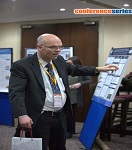
Biography:
Felix-Martin Werner studied Human Medicine at the University of Bonn. He has been working as a medical teacher in the formation of geriatric nurses, occupational therapists and assistants of the medical doctor at the Euro Academy in Pößneck since 1999. He has been doing scientific work at the Institute of Neurosciences of Castilla and León (INCYL) in Salamanca (Spain) since 2002. With Professor Rafael Coveñas, he assisted at over 30 national and 12 international congresses of neurology and published over 40 reviews and two books about neural networks in neurological and psychiatric diseases. Since 2014, he has belonged to the Editorial Board of the Journal of Cytology & Histology.
Abstract:
Alzheimer's disease is a neurodegenerative disease with cognitive, depressive and psychotic symptoms. We summarize the neurotransmitter alterations above all in the hippocampus and frontal/temporal cortices. In these brain areas, hypoactivity of acetylcholine and hyperactivity of noradrenaline at the beginning of the disease and hypoactivity of noradrenaline can be found. Glutamate exerts an excitotoxic effect and the presynaptic inhibitory neurotransmitter GABA shows hypoactivity. In depressive symptoms, a deficiency of monamines occurs in the brainstem and hippocampus. In psychotic symptoms, hyperactivity of dopamine and serotonin can be detected in the hippocampus and the ventral tegmental area. Neural networks in the corresponding brain areas are suggested. In Alzheimer's disease, 5-HT4 and 5-HT7 agonists and 5-HT3 and 5-HT6 antagonists have been suggested for the treatment of cognitive symptoms. In pioneer clinical studies, 5-HT4 agonists and 5-HT6 antagonists have shown a therapeutic effect, which was higher than placebo. In depressive symptoms, 5-HT reuptake inhibitors have a good therapeutic effect and can be used to treat aggressive behavior. In psychotic symptoms, 5-HT2A antagonists and second generation antipsychotic drugs can be administered, although the adverse effects should be considered. Because in Alzheimer's disease, a neurotransmitter imbalance between GABAA GABAergic neurons with hypoactivity and NMDA glutamatergic neurons with hyperactivity can be found, the first clinical studies with combined GABAA agonists and NMDA antagonists will be described.
Keynote Forum
Jinwei Zhang
University of Exeter, UK
Keynote: Activation of K+–Cl-–cotransporter KCC2 by inhibiting the WNK-SPAK kinase signalling as a novel therapeutic strategy for epilepsy
Time : 10:20:11:00

Biography:
Abstract:
The Cl--extruding transporter KCC2 (SLC12A5) critically modulates GABAA receptor signaling via its effect on neuronal Cl- homeostasis. Previous studies have shown that KCC2 was downregulated in both epileptic patients and various epileptic animal models. We discovered that the in vitro dual phosphorylation of Thr906 and Thr1007 in the intracellular carboxyl (C)-terminal domain of KCC2, mediated by the Cl--sensitive WNK-SPAK serine-threonine protein kinase complex, maintains the depolarizing action of GABA in immature neurons by antagonizing KCC2 Cl- extrusion capacity. GABAAR-mediated inhibition confines KCC2 to the plasma membrane, while antagonizing inhibition reduces KCC2 surface expression by increasing the lateral diffusion and endocytosis of the transporter. This mechanism utilizes Cl- as an intracellular secondary messenger and is dependent on phosphorylation of KCC2 at threonines 906 and 1007 by the Cl--sensing kinase WNK1. We propose this mechanism contributes to the homeostasis of synaptic inhibition by rapidly adjusting neuronal [Cl-]i to GABAAR activity. We further demonstrate here that this signaling pathway is rapidly and massively activated in an acute epilepsy model.This indicates that dephosphorylation of KCC2 at Thr906 and Thr1007 is a potent activator of KCC2 activity, and small molecular targets WNK-SAPK kinase signaling may be a novel therapeutic strategy for epilepsy.
- Clinical Neurophysiology | Neuronal functions and disorders | Neurorehabilitation| Neuroimaging | Spinal Surgery | Neurosurgery | Brain Tumour
Chair
Felix-Martin Werner
Euro Akademie Pößneck, Germany
Co-Chair
Tamajit Chakraborty
Sir Ganga Ram Hospital, India
Session Introduction
Ludmila Zylinska
Medical University of Lodz, Poland
Title: Neuronal calcium dyshomeostasis as a crucial process in neuropathologies
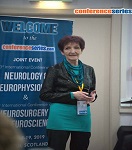
Biography:
Ludmila Zylinska PhD, DSc, is a Full Professor and Head of the Department of Molecular Neurochemistry, Medical University of Lodz, Poland. Her scientific interests are related to regulation of neuronal calcium homeostasis with particular attention brought on plasma membrane calcium pumps in the CNS, as well as on molecular mechanisms of calcium-dependent processes that regulate neuronal transmission in physiological and pathological conditions. She has published more than 60 papers in the areas of Biochemistry, Neuroscience and Cell Biology.
Abstract:
Oscillations of cytosolic Ca2+ are necessary for cellular signaling and propagation of Ca2+ signal is an absolute requirement for the functioning of neuronal cells. Ca2+ appears to be a universal and ubiquitous signaling molecule, thereby in resting neuronal cells its concentration is kept at ~100 nM against 1-2 mM outside the cell. Inability to maintain calcium homeostasis in neurons underlies many neuropathologies. Ca2+ may elicit a variety of different responses based on the type of targeted neurotransmission pathways, and it regulates synaptic plasticity, controls neuronal growth and neuronal survival. The plasma membrane contains a high affinity Ca2+-ATPase (PMCA) that translocates Ca2+ from the cytosol to the extracellular environment. The enzyme is coded by four separate genes (PMCA1-4), among which PMCA2 and PMCA3 are considered as neuron-specific forms. In the brain, PMCA function declines progressively during aging, thus impaired calcium homeostasis may contribute to neurodegeneration. We have developed the stable transfected differentiated PC12 cells with reduced level of PMCA2 or PMCA3, and the most critical finding was permanently increased resting Ca2+ concentration. Altered PMCA composition affected the expression level of several Ca2+-associated proteins (SERCA, calmodulin, calcineurin, neuromodulin) and certain types of voltage-gated calcium channels. We have also evidenced a novel PMCA role in regulation of bioenergetic pathways and mitochondrial activity. Interestingly, some changes could occur as adaptive processes protecting cells against calcium overload. Since age-related PMCA decrease has been documented, our modified PC12 cells may be a useful model to clarify the biological changes in neurons as well as to study the vulnerability of cells to neurodegenerative insults.
Jaideep J Rayapudi
Pondicherry Institute of Medical Sciences, India
Title: Challenges to human intelligence in a future with artificial intelligence
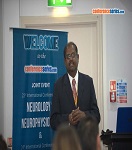
Biography:
Dr. Jaideep J Rayapudi, completed MD Physiology in 2003 and has been involved in training & development of Medical Students with a keen interest in the process of learning & memory. He has been at the cutting-edge of developing & implementing technology-based education systems and advocates greater use of artificial intelligence to improve healthcare and healthcare education. He believes that the only way to know the future is to build it and that begins by challenging the status quo.
Abstract:
A lot of discussion abounds today about the future of Humanity, society and community with respect to the advancing prospects of all-pervasive artificial intelligence in the coming days; be it the voice activated devices, self-driven cars, financial trading or even robot-driven healthcare. In the background of all these massive and quick changes how does the human brain respond & react? The industrial revolution took away jobs which had traditionally required human muscle power and now in the information age we are poised to lose out jobs to machines where Human Intellectual work is required. Outside of the job space too, much of decision-making and thought has been aided heavily by data driven machine learning algorithms.
Neuroplasticity can enable the brain to get better and learn more; can the opposite be true with disuse of critical components of our cognitive behaviour? The future challenge for cognitive neuroscientists would be to guard & guide brains with suitable strategies to minimise the damage due to the onslaught of machine intelligence. Steps must be taken to recognise relevant issues and diagnose & intervene wisely globally. While apocalyptic scenarios like in the Terminator / Matrix may be prevented by sound policy; neural responses and its subsequent effects in areas of Psychology, society, polity, culture, art, design, relationships, religion etc must be prepared for and countered / augmented if needed. This proposed talk seeks to highlight some of these concerns and generate dialogue, response and action in this matter.
Dharitri Parmar
Government Medical College, Surat, India
Title: Review on omega fatty acids and neurophysiology
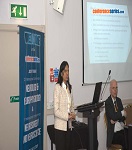
Biography:
Dharitri Parmar is working as Professor in Physiology since 2007 and as Teacher in medical college since 1992. She has contributed almost 22 years as teacher is in Government Medical College, Surat, India which is affiliated to Veer Narmad South Gujarat University. She is multifaceted personality who is interested in administration and academic activities. Currently holding the post of Addittional Dean of the Government Medical College. She has worked on few reserch topics and floated presentation online. She has visited nearly 50 medical schools in India and overseas as assessor (deputed by Medical council of India) : as an examiner or as an interviewer. She has also reviewd number of publications for journals.
Abstract:
Omega 3 and 6 are different types of PUFA having distinct effects on human systems. EFA is most debatable and important nowadays while studying nutritional role of lipids and its effects in physiology. This oral presentation is to focus on recent advances in importance of ratio (omega 6: omega 3) for clinical purposes physiologically. Omega 3 and Omega 6 compete for enzymes to produce signaling molecules, to modulate gene expression and to consolidate cell-membrane. The ratio of omega 6 to omega 3 is of importance according to various studies and its effects on nervous system physiologically, which may differ for different tissues or functions. Many hypothesis and various mechanisms are discussed herewith in context to BBB, membrane fluidity, myelin sheath, neurotransmitters etc. As a researcher it is studied for physiology of Learning, memory, sleep, early development, aging, and stress with EFA. Results conclude that 4:1 ratio has protective and stabilizing effects on neuron and its functions.The ratio may be a key factor in modulating behavioral, developmental, pharmacological effects of lipids.

Biography:
Rebecca B Baker holds two Bachelors degrees: one in Nursing from the University of Tennessee, the Health Science Center in Memphis and one in Education from the University of Memphis. Currently she is completing pre-requisites to purue a Doctor of Nursing Practice. She serves as the Chief Clinical Officer at Utilize Health, a population health compamy that specializes in care management services for patients with severe neurological conditions. She is a veteran nurse with over twenty-six years of clinical experience working with patients and care teams in a variety of settings.
Abstract:
Why aren’t long term post acute outcomes and recovery documented in patients with neurological conditions such as severe spinal cord injury (SCI)? As a healthcare system, how far should we reach in documenting outcomes and recovery and for what length of time so that current knowledge aligns with rehabilitation approaches for mobility recovery? Historically, research for the severe SCI patient population has looked at smaller sample sizes and the patients are less than 1-2 years post injury or diagnosis. In this presentation, we explore what patient reported outcomes can do to shift the conversation around what mobility recovery and tarteged rehabilitation therapies in SCI looks like. A key factor in moving the conversation regarding expected outcomes requires a fundamental hypothesis that recovery from severe spinal cord injury is a life-long process. Therefore, with research and data collection at scale (tens of thousand of patients), we can start to tie causation to pieces of recovery and even rehabilitation timelines and therapies that may not have been considered in the past. Case studies will be presented and explores a sample case: a 17 year old sustained an Asia A complete SCI at C6-T5. After nearly 6 years, she learned to walk unasissted. Even after 14 years (she is 31 today), she continues to recover. Collecting and analyzing patient reported outcomes at scale can shed light on long term recovery and what is possible in a poulation that has historcially been given little to no hope in mobility recovery.
Felix-Martin Werner
Euro Akademie Pößneck, Germany
Title: Update of the neural networks involved in generalized epilepsy
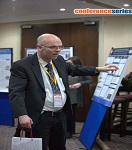
Biography:
Felix-Martin Werner studied Human Medicine at the University of Bonn. He has been working as a medical teacher in the formation of geriatric nurses, occupational therapists and assistants of the Medical Doctor at the Euro Academy in Pößneck since 1999. He has been doing scientific work at the Institute of Neurosciences of Castilla and León (INCYL) in Salamanca, Spain since 2002. With Professor Rafael Coveñas, he assisted at over 30 national and 12 international Congresses of Neurology and published over 40 reviews and two books about neural networks in neurological and psychiatric diseases. Since 2014, he has belonged to the Editorial Board of the Journal of Cytology & Histology.
Abstract:
We reviewed the alterations of neurotransmitters and neuropeptides in the following brain areas involved in generalized epilepsy: hippocampus, hypothalamus, thalamus and cerebral cortex. In these brain areas, neural networks are also actualized. The mechanisms of action of newer antiepileptic drugs, for example a GABAB agonist, an AMPA receptor antagonist and brivaracetam, used in the treatment of generalized epilepsy are also discussed. Updating the neural networks, we suggest that in the hippocampus GABAergic neurons presynaptically inhibit, via GABAB receptors, epileptogenic neurons. GABAergic, glutamatergic, serotonergic and dopaminergic neurons form the principal neural network, while GABA and serotonin deficiency and dopamine and glutamate hyperactivity have a proconvulsant effect. In preclinical studies, the GABAB receptor agonist GS-39,783 exerted a good antiepileptic effect. Perampanel, an AMPA receptor antagonist, showed good anticonvulsant effects in the treatment of partial-onset seizures and primary generalized tonic-clonic seizures. In this treatment, perampanel can be combined with other antiepileptic drugs. Brivaracetam, whose mechanism of action will be explained in detail, showed a good efficacy in the treatment of adult focal seizures and secondarily generalized tonic-clonic seizures.
